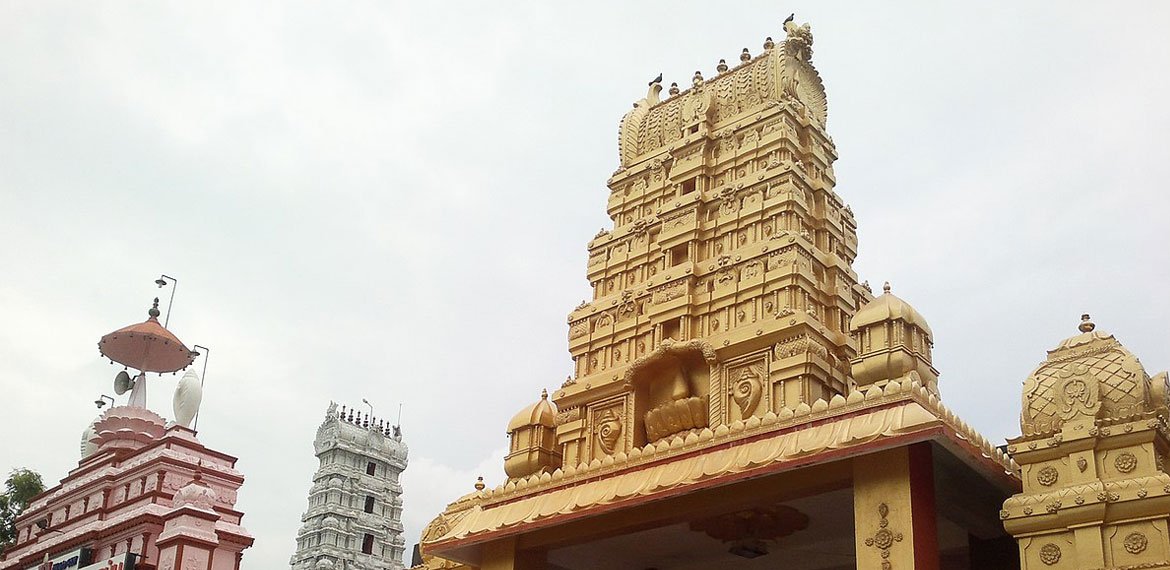Samithoppa Padi

Swamithoppe pathi:
Swamithoppe Pathi (Tamil: சுவாமிதோப்பு பதி, Swamithoppu-pathi, Manavai-pathi, or Thamarai-pathi) is the major pathi of the Ayyavazhi, the leader of all worship places of the Ayyavazhi, and the sacred venue of the Tavam. Swamithope is regarded the principal religious center of the Pancha pathi and the primary focus of Vaikundar's incarnational efforts.
According to Ayyavazhi tales, Ayya Vaikundar, an avatar of Lord Narayana, performed his tavam in Poovantanthoppe, garnering admirers from all over India. Ayya Vaikundar was thought to have been interred there when he died, and a square-shaped 'pathi' was built around him. Ayyavazhi's holy text, Akilathirattu ammanai, refers to the temple as "Thoppuppathi".
Genesis and History:
According to Akilam, Ayya Vaikundar incarnated from the sea and, after establishing laws and regulations for God-heads, arrived to Detchanam (Swamithoppe) and conducted Tavam for six years in the area now known as Vada-va-mugam. When the Kalineesan arrived to capture him, he went back into the sea at Muttappathi and then returned to Swamithoppe (also known as the Vinchai in Tamil).
Following his trial, his devotees transported him in a Vahana to Swamithoppe, where he extinguished the wicked spirits and united the Seven Virgins with himself. Then, after marrying the goddesses in Ambalappathi, he returned to Swamithoppe.
According to Akilattirattu Ammanai, Swamithoppe is the lone place Narayana (Vaikundar) slept (in Tamil: Pallikolluthal) following his incarnation. Then he sent 700 families to Thuvayal Thavasu in Vakaippathi to organize festivals and celebrations. And after all of the Avathara Ekanais, he gained Vaikundam, and his bodily body was deposited in what is now Swamithoppe's Palliyarai.
Architecture and structure:
The Palliyarai consists of two oil lights (kuthuvilakku), an elunetru, and a big mirror. The temple also retains certain artifacts thought to have been used by Ayya Vaikuntar, such as a rattan cane (perampu) and a pair of wooden sandals, on a raised platform draped in kavi fabric. The Palliyarai is surrounded by internal corridors.
A fifty-five-foot-tall flagmast stands 50 feet from Palliyarai. Unpanpurai is located north of the flagmast. They prepare the food here and serve it to the devotees. There is a community well about 300 meters from the main Pathi. According to Akilattirattu Ammanai, all eighteen castes bathe in that well. It was regarded sacred to wash and drink from that well. Then there was Paal Kinaru in the extreme east, Vatakku Vasal in the north, and Sivaye Medai, also known as Karuda Medai, to the west of Palliyarai. Then they were all surrounded by exterior corridors. There is a bell tower above the location where Vaikundar performed the Tavam.
The biggest celebration of Swamithoppe is Kodiyettru Thirunal, which is held three times a year during the Tamil months of Vaikasi, Aavani, and Thai. It begins with Kodiyetrru (flag hoisting) and concludes on the eleventh day with a car procession. People from various parts of Tamil Nadu and Kerala attend this festival. Then came Thiru Eadu Vasippu, a seventeen-day festival during which the entire contents of Akilattirattu Ammanai were read melodiously. It was honored during the Tamil month of Karthigai, when Hari Gopalan Citar wrote it.
Nitham Thirunal:
According to the directions of Akilam, the Swamithope pathi conducts daily festivals (i.e., every day is considered a festival day). As a result, the ceremonial practices that take place on festival days continue throughout the year, albeit on a smaller scale than during other festivals. The daily Panividai begins extremely early in the morning. Every day about 3 p.m., the Payyans and temple residents travel to Muthirikkinaru to take a sacred bath. Then they return to the Pathi to begin the panividai. The Payyan chants Ukappatippu, which the devotees repeat. Then they open the door to the sanctum sanctorum.
Witnessing this scenario with a dozen temple bells and a conch is considered sanctifying. Then there is Vahana pavani.s
Vahana pavani circles the temple and travels along the four car roadways, first through Santhana Veethi and then Ratha Veethi. Every day, Nithiyapal is prepared and ritually offered to Ayya Vaikundar. It was the sole food Ayya was said to have consumed when in human form at Swamithoppe. This is a daily offering. The Pathi is prepared on a daily basis by the descendants of Podukutty, the first Pattathu Ayya of the Payyan dynasty. The devotees are served thavanaipal, a gruel made from rice and green gram.



